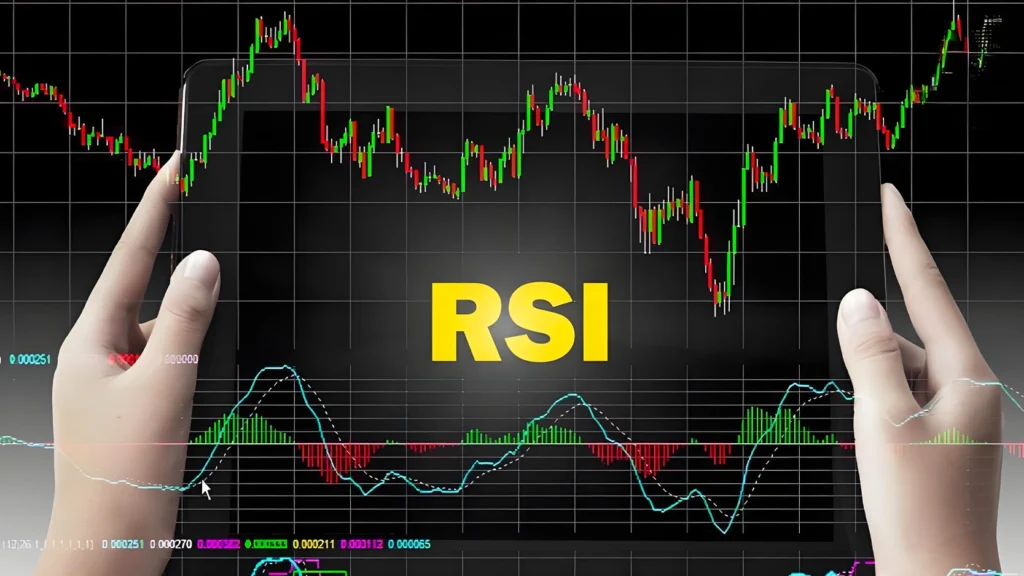What is Divergence? How Should We Interpret Market Divergence Signals?
What is Divergence?
Essentially, divergence describes a contradiction or discrepancy between price action on the chart and the momentum measured by technical indicators. It is like a car that continues to glide upward and reaches new heights, while its engine’s RPM is steadily declining. Simply observing the car’s position (price) may create the illusion that everything is fine, but checking its engine (momentum indicators) reveals a warning: the driving force is weakening. Therefore, divergence is the market’s subtle way of whispering to us that the underlying strength of the current trend may be fading, and could even be quietly building momentum in the opposite direction.
What Exactly Does Regular Divergence Imply?
Before delving into complex trading strategies, we must first have a solid grasp of the fundamental type of divergence that traders encounter first. This is the so-called “regular divergence”, which is usually regarded as a potential warning signal, suggesting that a prevailing trend is losing its original momentum and may be about to face a correction, or even a full reversal. Understanding regular divergence is the cornerstone for building a complete divergence analysis framework.
What is Bearish Divergence (Top Divergence)?
Bearish divergence, more commonly known in trading circles as top divergence, is an important warning signal during an uptrend.
Its definition is very clear: when the market is in an uptrend, the candlesticks on the price chart successfully form a “higher high”, but at the same time, the technical indicators below (such as Macd or RSI) fail to follow through and instead form a “lower high”. This inconsistency between price and indicators directly reveals the internal contradiction of the market.
Related recommendation: What is a candlestick? How to understand the secrets of the market?
Bearish divergence strongly suggests that although the price appears to reach new highs on the surface, the buying momentum or upward force driving this rally is in fact weakening. This can be understood as a sign of exhaustion in bullish strength. Every new price high requires stronger market enthusiasm and capital to sustain it. When indicators show declining momentum, it means market participants are less willing to buy at higher levels, and the foundation of the trend begins to weaken. Therefore, bearish divergence is like a yellow warning light hanging at the top of the market, reminding traders that the bulls may already be fatigued and the risk of a pullback or reversal is significantly increasing. It is not an absolute sell signal in itself, but rather a strong alert to heighten caution and consider tightening risk management.
The reliability of bearish divergence has its own unique explanation at the level of market psychology. Within market sentiment, fear often spreads faster and carries greater impact than the buildup of confidence. The appearance of a bearish divergence signal can serve as a trigger point, swiftly transforming market greed into fear, thereby setting off chain selling pressure that drives prices sharply lower. This also explains why, in the experience of many traders, bearish divergence as a reversal warning tends to have a higher level of accuracy compared with bullish divergence.
What is Bullish Divergence (Bottom Divergence)?
In contrast to bearish divergence, bullish divergence is observed in a downtrend as a potential turning point, and is commonly referred to as bottom divergence.
Its definition occurs in a clear downtrend: when the asset price on the chart forms a “lower low”, indicating selling pressure remains heavy, but the technical indicators below refuse to follow and instead form a “higher low”. This phenomenon, where price makes a new low but indicators refuse to do so, is an early sign that a market bottom may be forming.
Bullish divergence conveys a core message: although the price continues to probe lower, the selling pressure from the bears is weakening. This means that market pessimism may have reached its peak, the strength of the sellers is being exhausted, and potential buyers may be quietly stepping in. The bears have lost their dominance, and the market’s balance may be starting to tilt toward the bulls. Therefore, bullish divergence is often interpreted as a potential signal that the downtrend is nearing its end, suggesting that a price rebound or even a full trend reversal may soon arrive.
However, traders need to exercise greater caution when using bullish divergence. Just as building market confidence is more difficult than spreading fear, the formation of a true market bottom is often slow and full of setbacks. Before the trend ultimately reverses, the market may produce multiple false bullish divergence signals, where prices resume their decline after only a brief pause, causing losses for traders who entered too early. Therefore, compared with bearish divergence, bullish divergence signals often require more confirmation from other analytical tools to validate their effectiveness.
How Should We Interpret Hidden Divergence?
If regular divergence is like a warning sign reminding traders that “a turn may be ahead”, then within the toolbox of technical analysis there exists another, more sophisticated signal with a completely different function—(HiddenDivergence). Many traders stop at learning regular divergence, assuming that divergence only implies reversal. However, this limitation in understanding may cause them to miss opportunities or even make wrong decisions. In fact, the market sometimes uses divergence to signal that the current trend remains strong. This is the realm of hidden divergence, a secret weapon for traders to identify high-probability trend continuation patterns.
What is Hidden Bullish Divergence?
Hidden Bullish Divergence is a Powerful Tool for Spotting Opportunities to Add Positions within an Established Uptrend.
Its definition is as follows: in an uptrend, the price action undergoes a pullback but does not break below the previous low, thereby forming a “higher low”. At the same time, the momentum indicators below move downward and form a “lower low”.
This signals a high probability of trend continuation. It reveals a very positive internal market dynamic: although the indicators show that momentum has experienced a deep retracement or even made a new low, the price itself demonstrates strong resilience by refusing to break the prior support level. When price remains firm despite extreme weakness in momentum, it is clear evidence of the strength of bullish forces. This indicates that the bulls are still fully in control of the market, and the pullback serves only to shake out weak hands and build energy for the next leg higher. Therefore, hidden bullish divergence is often regarded as an excellent technical signal for “buying the dip” in an uptrend.
The Refueling Station for Bear Trends: What is Hidden Bearish Divergence?
In contrast, hidden bearish divergence is a tool used in a downtrend to determine when a rebound is ending and the trend is about to resume.
Its definition is: within a dominant downtrend, the price makes a brief rebound but fails to break above the previous high, thereby forming a “lower high”. Meanwhile, the momentum indicators below surge upward during this period and form a “higher high”.
This pattern likewise signals trend continuation. Although the indicators show a burst of market momentum in the form of a rebound, the strength of this rebound is weak and unsustainable, as it fails to push the price above the previous resistance level. The contrast between the weak performance of price and the strong performance of indicators highlights that the bears still firmly hold the upper hand. This rebound is most likely just a technical correction, a “refueling station” within the downtrend. Once the rebound momentum is exhausted, the price is likely to resume its decline. Therefore, hidden bearish divergence can serve as a reference signal for “selling the rallies” in a downtrend.
Quick Reference Guide to The Four Types of Divergence
If traders only understand regular divergence, when they encounter hidden bullish divergence (price forms a higher low while the indicator forms a lower low), they may mistakenly interpret the indicator’s “lower low” as a regular bearish signal, leading them to sell or short—precisely at the critical moment when the uptrend is about to resume, resulting in the exact opposite decision. Clearly distinguishing these two types of divergence is not only an advancement of knowledge but also a key safeguard to protect traders from such common and costly mistakes. For ease of quick review and reinforcement, the following table summarizes the core characteristics of the four types of divergence and their market implications.
| Types of Divergence | PriceaAction | Indicator Action | Market Implication |
| Regular Bearish Divergence | Higher high | Lower high | Trend may reverse downward |
| Regular Bullish Divergence | Lower low | Higher low | Trend may reverse upward |
| Hidden Bearish Divergence | Lower high | Higher high | Trend may continue downward |
| Hidden Bullish Divergence | Higher low | Lower low | Trend may continue upward |
Which Indicators can Effectively Identify Price Divergence?
There are many oscillators in the market that can display divergence, but a few stand out as traders’ first choice due to their design principles and characteristics. Choosing which indicator to use is essentially a trade-off between sensitivity and reliability. There is no single “best” indicator, only the one that best fits the current market environment and personal trading style.
Application of Macd Divergence
The Moving Average Convergence Divergence (Macd) is one of the most popular and reliable tools for identifying divergence. The core of Macd lies in its reflection of the relationship between two exponential moving averages (EMA) of different periods, making it a powerful indicator for measuring market trends and momentum shifts. For this reason, many experienced traders prefer to use Macd to identify divergence, as it not only shows the direction of momentum but also reveals the strength behind it.
Related recommendation: What is a moving average? How does it reveal market trends?
In practice, traders can observe Macd divergence from two perspectives:
- Divergence of the Macd lines: This refers to the divergence between the fast line (DIF) and the slow line (DEM/Macd) compared with price action. For example, in bearish divergence, the price makes a new high while the highs of the Macd fast line are declining.
- Divergence of the Macd histogram: The histogram represents the difference between the fast line and the slow line, and its height directly reflects the strength of momentum. When the price makes a new high but the peaks of the histogram are shrinking, this also forms a strong bearish divergence signal. Because the histogram changes are more intuitive, many traders rely on it to quickly identify momentum weakening.
Since the Macd is calculated based on moving averages, its response speed is relatively slow and the signals are smoother. This makes it highly effective in identifying major trend reversal points on larger timeframes, while filtering out much of the short-term market noise.
Observation of RSI Divergence
The Relative Strength Index (RSI) is another momentum oscillator widely used to identify divergence. Unlike Macd, RSI is a bounded oscillator, with its values confined between 0 and 100. This characteristic makes it particularly effective in assessing overbought and oversold conditions in the market. Typically, an RSI value above 70 is considered overbought, while a value below 30 is considered oversold.
Related recommendation: What is the RSI indicator? How to identify overbought and oversold with RSI?
The unique value of RSI divergence lies in the fact that when combined with overbought and oversold zones, the reliability of the signal is greatly enhanced. For example, in a bearish divergence signal, if the first price high corresponds to an RSI value deep in the overbought zone (such as above 80), and the second, higher price high corresponds to a lower RSI value but still within the overbought zone, then the credibility of this divergence signal is very high. This indicates not only that momentum is weakening, but also that the market is in an overheated state and highly prone to a pullback. RSI measures both the speed and magnitude of price changes, making it a pure momentum detector, especially effective in range-bound markets.
Interpretation of Stochastic Divergence
The stochastic oscillator is a momentum indicator based on the closing position of price within a specific period. It compares the closing price of a given period with the high-low range of that period to determine market momentum.
Compared with Macd, the stochastic indicator responds more quickly and sensitively. This means it may issue divergence signals earlier than other indicators, providing potential advantages for short-term traders or scalpers. However, high sensitivity is a double-edged sword, as it also makes the stochastic indicator more prone to false signals or market noise.
When using the stochastic indicator, one phenomenon that must be watched closely is “saturation”. In a very strong one-sided trend (whether upward or downward), the stochastic may remain “pinned” in the overbought zone (above 80) or oversold zone (below 20) for an extended period, losing its reference value. In such cases, if traders rely solely on the overbought or oversold signals of the stochastic to take contrarian positions, they may suffer significant losses. Therefore, while divergence signals from the stochastic indicator have reference value, they must be combined with other analytical tools to confirm the true state of the trend.
How to Filter Out False Divergence Signals?
Spotting a potential divergence signal on the chart often excites traders, as it seems to indicate an excellent trading opportunity. However, seasoned professionals are well aware of a harsh reality: not all seemingly perfect divergence signals can be trusted. The market is filled with numerous “false signals”, which are among the main traps luring traders into wrong decisions and causing unnecessary losses. Therefore, true trading skill lies not only in detecting divergence but also in building a rigorous process to filter out low-quality signals and confirm high-probability opportunities. This step is the key to transforming divergence analysis from theory into consistent profitability. It is not merely about pattern matching, but more like being a detective, constructing an irrefutable “case” by gathering multiple pieces of evidence.
The Importance of Multi-Timeframe Analysis
One of the most effective methods to filter divergence signals is through multi-timeframe analysis. The reliability of a divergence signal can vary dramatically depending on whether it appears across multiple timeframes simultaneously. For example, a bearish divergence that shows up on a 4-hour chart, if also found on the 1-hour chart and even the daily chart, will see its strength and credibility increase exponentially.
In this process, one golden rule must be followed: “smaller timeframes follow larger timeframes”. This means that a bullish divergence appearing on a 15-minute chart, if placed in the broader context of a daily chart where the market remains in a strong and confirmed downtrend, is likely just a brief rebound, with extremely high risk of trading against the main trend. Therefore, high-quality divergence signals should align with the direction of the larger timeframe trend, or at the very least, not be in serious conflict with it.
Combining Multiple Indicators for Confirmation
Never rely solely on a single indicator’s divergence signal to make decisions. A more robust approach is to look for “indicator confluence”, where multiple types of technical indicators issue the same warning at the same time. For example, when the price makes a new high, if the MACD histogram is shrinking while RSI also forms a bearish divergence, then the reliability of this sell signal is much higher than if only one of the indicators had issued it. This is because different indicators measure the market from different dimensions, and when they reach the same conclusion, it is like multiple experts diagnosing from different perspectives and arriving at the same opinion, making the accuracy naturally higher.
Looking for Divergence in Overbought and Oversold Zones
Although this principle was already mentioned when introducing RSI and the stochastic indicator, it deserves to be elevated to a general filtering rule. A divergence signal, if its first turning point already occurs deep in the overbought zone (e.g., RSI > 80) or oversold zone (e.g., RSI < 20), will see its potential strength significantly enhanced. This indicates that at the very first momentum peak of the trend, the market is already in an extreme sentiment state. In contrast, a divergence that occurs entirely within the middle range of the indicator usually carries much less importance and is more likely just a normal consolidation within the trend.
Drawing Trendlines on Indicators
This is a relatively advanced but highly effective technique: just like on the main price chart, draw trendlines directly on the indicator chart. For example, when observing a bearish divergence, a descending trendline can be drawn between the two gradually lower highs of the indicator. While the price is still hesitating about whether to break its support level, if the indicator’s trendline is broken upward or downward first, it often serves as a strong leading confirmation signal. A breakout of the indicator trendline can be regarded as evidence that internal momentum has undergone a substantial shift, suggesting that the price action is likely to follow soon.
Summary: How to Integrate Divergence Analysis Into Your Trading System?
Divergence itself is not a complete trading system that can operate independently. It is a powerful analytical tool, like a warning light or instrument reading in a cockpit, providing us with critical intelligence about the health of a trend, warning of potential risks, or confirming trend strength. But the final trading decisions must still seamlessly integrate it into a personalized trading system that includes clear risk management, position sizing, and entry and exit rules.
Achieving excellence in financial markets often requires a two-pronged strategy. On the one hand, it means sharpening market insight by mastering sophisticated techniques such as divergence analysis; on the other hand, it involves simultaneously optimizing trading efficiency to protect and enhance hard-earned profits. This is precisely the trading philosophy advocated by CashbackIsland and the core value it provides. Through its industry-leading rebate mechanism, traders can substantially reduce transaction costs on every executed order, which not only directly increases profit margins but also offers greater tolerance in strategy execution. When this cost advantage is combined with the platform’s professional calculation tools and timely market intelligence, it forms a comprehensive trading ecosystem. This system is designed to empower modern traders in pursuit of excellence, allowing sharp market analysis and intelligent cost management to complement each other, paving the way toward long-term success.
CashbackIsland continuously updates its trading education resources. Traders can visit the “CashbackIsland Teaching Guide” section to gain more forex knowledge and investment skills.
FAQ
Q1. What is “Divergence”? What Does it Represent in Trading?
Divergence refers to a situation where the market price movement of an asset and the movement of technical indicators (such as MACD or RSI) show inconsistency or contradiction. Essentially, it reveals a disconnect between price and its underlying momentum, and is usually regarded as a warning signal, suggesting that the current market trend may be weakening or that a correction or even a reversal may be approaching.
Q2. What is the Difference Between “Bearish Divergence” and “Bullish Divergence”?
Bearish divergence (top divergence) occurs in an uptrend when the price makes a new high but the indicator fails to make a new high. This suggests weakening upward momentum and that the trend may reverse downward. Bullish divergence (bottom divergence) occurs in a downtrend when the price makes a new low but the indicator refuses to follow with a new low. This suggests weakening downward pressure and that the trend may reverse upward.
“Trading financial derivatives involves high risk and may result in capital loss. The content of this article is for informational purposes only and does not constitute investment advice. Please make decisions cautiously based on your personal financial situation. CashbackIsland does not assume any responsibility for derivative trading.”
Related articles
-
In the realm of modern financial market analysis, whether it’s the fast-changing forex market, the highly volatile cryptocurrency space, or traditional stock indices, technical analysis plays an indispensable role. Among the many technical indicators, the Relative Strength Index (RSI) is undoubtedly one of the most classic and widely used tools....2025 年 9 月 4 日
-
In today's environment of persistently low interest rates combined with inflationary pressures, simply depositing money in the bank is no longer sufficient to preserve the future value of your assets. An increasing number of investors are seeking more proactive ways to grow their wealth, shifting from traditional savers to active...2025 年 8 月 13 日
-
In financial market terminology, “bottom-fishing” is a highly enticing yet challenging concept. It refers to an investment strategy aimed at buying assets that have undergone significant price declines and are believed to be undervalued, with the expectation that their prices will eventually rebound sharply. This strategy embodies the ultimate expression...2025 年 8 月 13 日













